Quiz, Curry, Skilled Workers, The Epics, Time Zones, Books
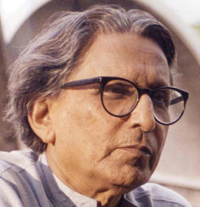
WHO, WHAT, WHERE, WHEN, & WHY
1. Balkrishna Doshi, 90, is the first Indian winner of the Pritzker Architecture Prize. Known
for combining modernist design styles with traditional Indian aesthetics, his works include
IIM-Bangalore, Amdavad ni Gufa, and Aranya Low Cost Housing. How much is the prize worth?
(A) $25,000 (B) $50,000 (C) $100,000 (D) $1 million
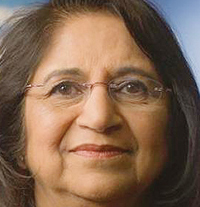
2. Sumita Mitra and Arogyaswami Paulraj will be inducted into the National Inventors Hall of
Fame. Both Mitra, who specializes in nanocomposite dental materials, and Paulraj, whose focus is
MIMO wireless technology, hold patents. How many inductees were chosen this year?
(A) 15 (B) 100 (C) 50 (D) 75
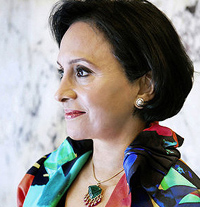
3. The 2018 James Beard Foundation nominees include ex-CEO Deepa Thomas, chef Vishwesh
Bhatt, New York Times reporter Tejal Rao, and freelance writer Mayukh Sen. Thomas, who gave up
her successful textiles business, won the nomination for Deepa’s Secrets. What is it?
(A) Novel (B) Restaurant (C) Documentary (D) Cookbook
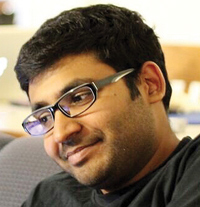
4. Parag Agrawal is the new CTO (chief technology officer) at Twitter, the world’s most popular
microblogging site. A graduate of IIT-Bombay, he got his Ph.D. in computer science from Stanford.
Which Silicon Valley tech company does India-born Shantanu Narayen head?
(A) Cisco Systems (B) Intel (C) Adobe Systems (D) Oracle
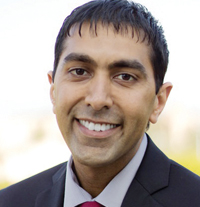
5. Neil Garg, professor of organic chemistry at UCLA, is the 2018 recipient of the biannual
Robert Foster Cherry Award for Great Teaching. Sponsored by Baylor University, it focuses on undergraduate
teaching. While Garg receives $265,000, how much does his home department get?
(A) $5000 (B) $10,000 (C) $20,000 (D) $35,000
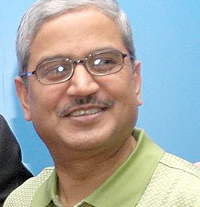
6. While former U.S. Airways CEO Rakesh Gangwal is worth $3.3 billion, making him the richest
Indian-American, according to the Forbes billionaires list, Pakistani-American entrepreneur Shahid
Khan is worth $7.2 billion. Gangwal co-founded which Indian airline?
(A) Jet Airways (B) GoAir (C) SpiceJet (D) IndiGo
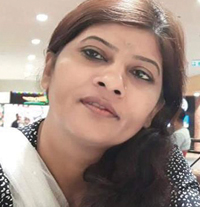
7. Krishna Kumari, a Dalit, made history recently when she was elected to a South Asian nation’s
senate (upper house). A human rights activist, she belongs to a marginalized Hindu minority
that makes up just 4 percent of this country’s population. Where did it happen?
(A) Sri Lanka (B) Pakistan (C) Nepal (D) Bangladesh
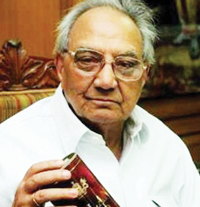
8. Kapil Mohan, who died earlier this year, was known for a dark rum that his company,
Mohan Meakin, launched in 1954. Before being toppled by McDowell’s Celebration, it was the
top-selling rum for many years. Mohan’s rum, which still has a cult following, is called what?
(A) Old Monk (B) Bacardi (C) Cruzan (D) Appleton
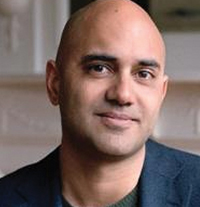
9. The $100,000 Edward M. Kennedy Prize recognizes outstanding work inspired by American
history. Pakistani-American Ayad Akhtar won it this year for Junk, which deals with finance and
fraud on Wall Street in the 1980s. Earlier, he received which honor for his acclaimed Disgraced?
(A) Tony Award (B) Man Booker Prize (C) Academy Award (D) Pulitzer Prize
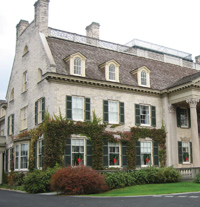
10. The George Eastman Museum, the world’s oldest museum devoted to photography, has
acquired an archive of 35mm prints of almost 600 Indian films made between 1999 and 2013. It’s
the largest collection of contemporary Indian cinema. Where in New York is this museum?
(A) Rochester (B) Buffalo (C) Syracuse (D) Albany
[Answers are at the bottom of this page.]
$ $ $ $ $
CURRY NOT IN A HURRY

Take-out (or take-away, in England) is a popular option for Indian restaurant food, but sometimes it can go to absurd lengths. In January, a curry house in Hampshire (U.K.) delivered food by plane to 50 British residents in Bordeaux, France, about 500 miles away. Kate Samuelson gives two more examples in Time magazine—but first, did you know about Britain’s desi pub crawl? The Black Country, close to Birmingham, was known for its coal mines and manufacturing jobs, drawing hordes of Indian—Punjabi, mostly—migrants during its heyday as an industrial hub in the postwar era. Deindustrialization brought decline, but now there’s been a comeback as residents find creative ways to revitalize the economy. One such initiative is the rise of desi pubs. However, the pub crawl here comes with a twist: the delicious dhaba-style food is a bigger draw than alcohol, attracting visitors from other places. After the original English pubs fell on hard times, local Indian entrepreneurs bought the properties and turned them into family-friendly desi pubs for a diverse clientele.
As for the other epic deliveries, an Indian restaurant in Manchester sent food to New Zealand, about 11,700 miles away—while a curry house in Birmingham got an order for U.N. troops in the Congo, 4,000 miles away. Amazing, considering that Britain’s first Indian-owned restaurant lasted only a year. Of course, that was back in 1810! But while Hindoostane Coffee House wasn’t a success, Veeraswamy, which also opened in London, has been in business since 1926.
˄|V ˄|V ˄|V ˄|V
SKILLED WORKERS IN LIMBO
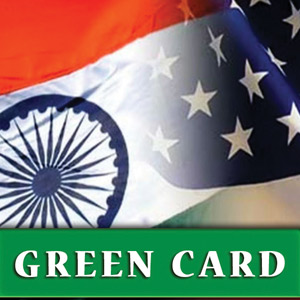
American universities have seen a sharp decline in the number of students coming from India. After hitting a peak in 2015, the numbers dropped in 2016 and 2017. Call it the Trump effect. For the fiscal year ending on September 30, 2017, only 47,000 student visas were issued to Indians, representing a 27 percent drop from the previous year. An anti-immigrant climate and the Trump administration’s policies have created fear and anxiety, deterring international students and potential migrants. H1-B visas and OPT (optional practical training) programs have become more elusive; not to mention, the criteria for issuing visas are stricter now. A few other nations—Canada, for example—have been more welcoming, and the employment prospects for foreigners there seem more promising.
If you’re an Indian professional seeking permanent residency in the U.S., you’ll have to wait years—even decades—to get a green card. As GCReforms.org pointed out, about 300,000 high-skilled Indian immigrants and their families are stuck in the green card backlog. There are two main reasons, and GCReforms—formed by a group of concerned Indians—hopes to bring about change by highlighting the issues and pushing for political action. One problem is that only 7 percent of U.S. green cards are issued to skill-based applicants (it is 25 percent in Canada, 40 percent in Australia, and 64 percent in the U.K.). Another reason is that, given the yearly green card quota for every nation, Indians are at a disadvantage because of the large number of applicants from their country. “The 7 percent limit for green cards is arbitrary and unfair,” according to GCReforms, “when 60 percent of [employment-based] visas are issued to the same country, causing the backlog.”
! ! ! ! ! ! ! ! !
BRINGING THE EPICS TO LIFE
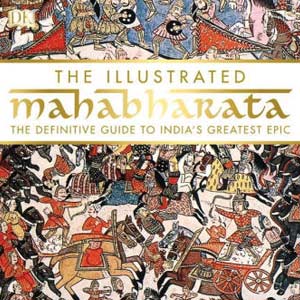
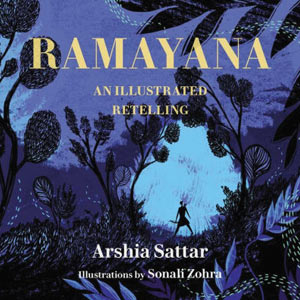
When Namita Gokhale, co-founder of the Jaipur Literature Festival, brought out The Puffin Mahabharata, here’s what Arshia Sattar said: “Without sacrificing the complexities of either the narrative or the characters, Gokhale’s lucid language and gentle prodding places the Mahabharata well within the reach of younger readers.” Now the same could be said about Sattar’s Ramayana: An Illustrated Retelling (Restless Books). The crisp narrative, complemented by Sonali Zohra’s vivid images, relates the timeless story of Rama’s exile and triumphant return. Sattar, who has a Ph.D. in classical Indian literatures from the University of Chicago, reminds readers that while dharma (duty) tells us what we should do, it is karma (action) that determines what happens to us. For her translation, Sattar turned to Valmiki’s Ramayana, the oldest version, which is also her favorite because it humanizes Rama. “It is a story of jealousy and betrayal, of love and honor, of courage and faith, of friendship and loyalty,” she writes, showing “how difficult it is to do the right thing when there are many choices before us.” Recommended for ages 10 and up, the hardback is affordably priced.
Affordable is not the word you’d use for The Illustrated Mahabharata: The Definitive Guide to India’s Greatest Epic (DK). But it’s an epic version of the epic, with over 500 gorgeous images and details you’d not find elsewhere. And if you’re looking for a modern fantasy novel inspired by India’s greatest epic, you can turn to Roshani Chokshi, the best-selling YA author based in Georgia. Her latest work is called Aru Shah and the End of Time (Rick Riordan Presents). It is Book 1 in her Pandava Series.
<= => <= => <= => <= =>
INDIA’S TIME ZONES
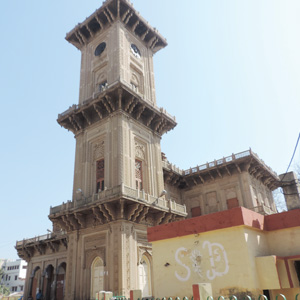
Officially, India has only one time zone. IST (Indian Standard Time) is five hours and 30 minutes ahead of GMT, the mean solar time maintained by the Royal Observatory in Greenwich, London. India has its own observatory in Mirzapur, Uttar Pradesh, where the clock tower was built in 1891. But it’s more of a curiosity now—IST is actually set by an atomic clock at the National Physical Laboratory in Delhi. Those who think India is too big for just one time zone may have a point. Especially in the Northeast, which in some ways is already disconnected from the rest of the nation, people don’t appreciate that they experience sunrises and sunsets almost two hours earlier than those living in western India. Which brings us to a corner of the country that has a different time zone. If you ever find yourself at a tea estate in Assam, you’ll encounter what’s called Chai Bagan Time. It’s set an hour ahead of IST. Not a bad practice, a wag would observe, considering how IST also stands for unpunctuality. Setting one’s clock ahead may be the perfect solution!
In the past, India did have two time zones—Calcutta Time and Bombay Time, separated by an hour. There was also Madras Time, but it was less than 10 minutes behind what’s now IST. Independence brought a unified time zone, though not right away; Bombay Time ended only in 1955. The official position seems to be that having more than one time zone would be confusing in a country like India. So how about changing IST by 30 minutes, as some have suggested, so that it is six hours ahead of GMT?
& & & & & & & & & &
BOOK MATTERS
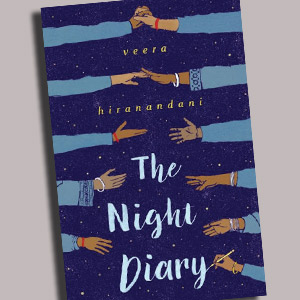
The Night Diary (Dial), a novel for middle schoolers, is by Veera Hiranandani. Her previous work was a South Asian Book Award finalist. In the new book, India’s partition in 1947 splits Nisha’s world—for she’s half Hindu and half Muslim, making her an outsider in both nations. When her father chooses India, their journey, which Nisha chronicles in the form of letters to her mother, is perilous. But it’s also filled with possibilities for a brighter future. Chandra Prasad’s Damselfly (Scholastic) is also about survival, although this time the teen characters are in a jungle on an island. Following a plane crash, an injured Samantha Mishra wonders if any of her fencing teammates have survived. While it may remind you of Alive, a true story about a rugby team’s ordeal in the Andes after a plane crash, Prasad’s novel was inspired by William Golding’s classic Lord of the Flies. It’s not just the wilderness that presents obstacles; the wildness of other survivors is a challenge as well.
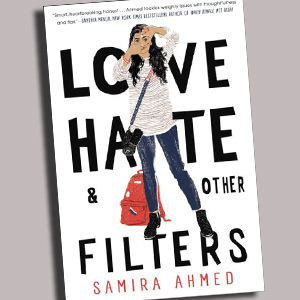
Love, Hate and Other Filters (Soho) is a best-selling novel for older teens by Samira Ahmed, who has taught English in high schools. It shows us how an Indian-American girl, Maya Aziz, straddles a cultural divide even as she’s coping with Islamophobia in the wake of a terrorist attack. Will Maya find the inner strength to counter family expectations, which she finds too conventional, and also overcome the bigotry she finds in the wider society? This debut is a Spring 2018 Barnes & Noble Discover Selection. Shobha Rao’s Girls Burn Brighter (Flatiron) is topical as well. Her earlier, prize-winning fiction touched on India’s partition, but in this novel, an Amazon Best Book in March, she takes on gender violence and discrimination. Charting the lives of two young women in rural India, Rao gives us, according to Vogue, “a searing portrait of what feminism looks like in much of the world.” Although both Ahmed and Rao were born in India, they moved to the U.S. as young children.
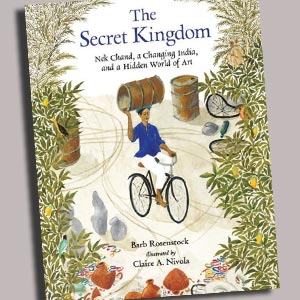
The Secret Kingdom (Candlewick), written by Barb Rosenstock and marvelously illustrated by Claire Nivola, gives youngsters a glimpse of the late Nek Chand’s Rock Garden in Chandigarh. While working for the government, this self-taught sculptor and environmentalist had defied the odds to build a secret garden from discarded materials on 13 acres of land. Ignored at first, the Rock Garden continues to be a major attraction four decades after its official opening. Another inspiring book, Manjhi Moves a Mountain (Creston), was published last year, but it continues to draw attention. It’s being translated into 18 languages and has won a bunch of honors. Author Nancy Churnin, the theater critic for The Dallas Morning News, and illustrator Danny Popovici inject new life into the late Dashrath Manjhi’s story. In Bihar, Manjhi single-handedly chiseled his way through a mountain—because it had prevented his injured wife from reaching the hospital on time. This superhuman feat, which helped his village gain better access to amenities, took the Mountain Man 22 years.
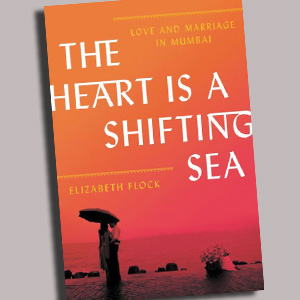
The Heart Is a Shifting Sea (Harper), Elizabeth Flock’s debut, sounds like a great title for a novel. But this exploration of ‘love and marriage in Mumbai’ is actually nonfiction, giving readers an intimate peek into the lives of three couples: Veer and Maya, Shahzad and Sabeena, Ashok and Parvati. This is no cliché-ridden, ‘curious (or clueless) foreigner in India’ book. Rather, Flock, a PBS reporter, spent almost a decade getting to know the three couples. “Flock’s total access to her characters, and her highly sympathetic and nonjudgmental gaze, prove that love and literature know no borders,” notes Suketu Mehta. For a novel on the same topic, you can pick up Falguni Kothari’s My Last Love Story (Graydon House). It’s an unusual love story, although this work is also set in India. Simi Desai’s husband, who is dying of cancer, wants their best friend—and Simi’s former beau—to live with them. The arrangement seems unconventional, but the real surprise is in how this marital tale plays out.
>>>>>>>>>>>>>>
[Answers to the quiz: 1= (C). 2 = (A). 3= (D). 4 = (C). 5 = (D). 6 = (D). 7 = (B). 8 = (A). 9 = (D). 10 = (A).]
Enjoyed reading Khabar magazine? Subscribe to Khabar and get a full digital copy of this Indian-American community magazine.
blog comments powered by Disqus










